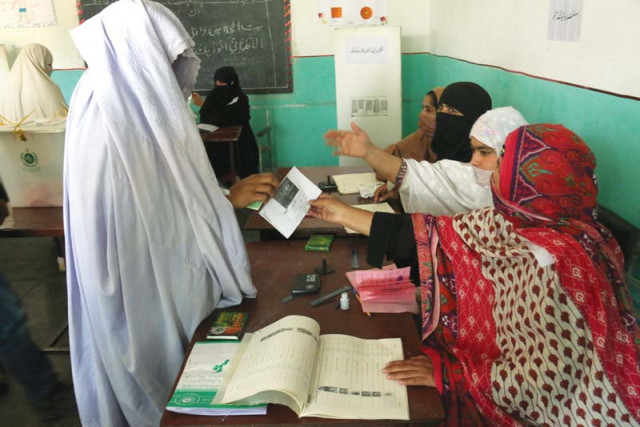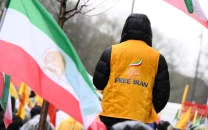Low women turnout a pressing challenge ahead of polls
Experts call for enhanced efforts to overcome societal barriers

With the general elections just around the corner, the low turnout among female voters remains a persistent challenge as Pakistan has suffered from an endemic low voter turnout in general and women voter turnout in specific, casting a shadow over efforts to enhance women’s engagement in the electoral process.
Experts and researchers point to societal, economic, and mobility-related factors as they call for a renewed push to encourage women’s active participation in politics, saying the ongoing challenge raises vital questions about representation and inclusivity within the nation’s political sphere.
Research shows that overall turnout rates for the elections in 2008, 2013, and 2018 have been 45 per cent, 54 per cent, and 50 per cent, respectively.
According to the Election Commission of Pakistan (ECP), it was reported, that the women voter turnout in the 2018 general elections stood at 40 per cent with 21 of 46 million registered women voters participating in polling.
“Pakistan suffers from an endemic low voter turnout in general and women voter turnout in specific,”
Pakistan Institute of Legislative Development and Transparency (PILDAT) President Ahmed Bilal Mehboob said, “Only 40% of women vote on the average. A lot needs to be done at a societal level to address these issues.”
Read More: Number of women voters increases slightly
The PILDAT chief said that NADRA, ECP, civil society, political parties, international organisations and governments have worked hard to get women to obtain CNIC in order to register as voters.
The PILDAT chief said that the number of women not registered as voters has, therefore, been declining as a percentage of total registered voters.
At the heart of the problem is women not getting their CNICs, Mehboob said, because they don’t need one unlike men who travel abroad, open bank accounts, seek driving licences, and arms licences, and buy or sell property for which they need to have CNIC.
Sadly, he added, these women are not part of the mainstream of society though they are hard-working productive members of society.
Read More: ECP sees over 120m registered voters in country
“I think political parties need to do more to mobilise their workers at a grassroots level to motivate such women to get CNIC,” Mehboob said, saying this will almost automatically result in registration as voters.
However, he said, registration as a voter is just one step; actually casting a vote is another.
Pakistan Peoples Party (PPP)’s former senator Farhatullah Babar said that women voters are victims of double jeopardy, saying over 10 million of them without Computerised National Identity Card (CNIC) are automatically disenfranchised due to CNIC being mandatory for voter registration.
Secondly, the veteran politician said, that voter turnout of women is also low by over 10 per cent compared to men voters. Thus, he said, over 13 million women were out of the voting exercise in the 2018 election.
To put it in context, Babar said, the party winning the 2018 election got about 17 million votes, saying imagine the impact on election outcome if women voters were enabled to vote.
“Voting is a citizen right,” he said, “by making it contingent upon CNIC the right of a person has been made into his obligation. Here in lies the problem.”
Recently, PPP’s Malaika Raza had said that roughly 10 million women in the country do not possess a CNIC, rendering them ineligible to be registered as voters, and called on the authorities to register the disenfranchised women in the electoral rolls.
Malaika, the general secretary of the human rights cell of PPP, while expressing serious concerns over the significant number of ‘missing women’ said that utmost efforts should still be made to include these women in the electoral rolls so that they could take part in the upcoming general elections slated to be held in January next year.
“Inclusion of 10 million women can turn around the whole election results,” Malaika said.
Natalya Rahman and Sarah Thompson, both PhD candidates in Political Science at Stanford University, found out in their study that when women’s mobility is constrained by a lack of male accompaniment or they expect to travel along a predominantly male route, their likelihood to turn out decreases.
The study implies that strategies to increase women’s political participation in developing democracies should take the role of women’s mobility seriously.
For the 2018 election, they noted, the ECP made a variety of reforms to encourage women’s participation, including making it mandating that at least 5 per cent of each political party’s nominated candidates be women and that the election results would be nullified if women’s turnout was below 10 per cent.
They said that researchers have shown that the gender gap in turnout in Pakistan’s 2018 election was 9.1 per cent, or 11 million votes, saying “this number of votes is roughly equivalent to the entire population of Lahore, Pakistan’s second-largest city.”
Dr Hamida BiBi, a lecturer at Bacha Khan Medical College Mardan, stated in her research paper titled “Causes of Low Turnout of Women in the General Elections:
A Case Study of District Peshawar” that ideological, economic and patriarchal mindset are the main factors that hinder women participation in the electoral process.



















COMMENTS
Comments are moderated and generally will be posted if they are on-topic and not abusive.
For more information, please see our Comments FAQ